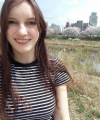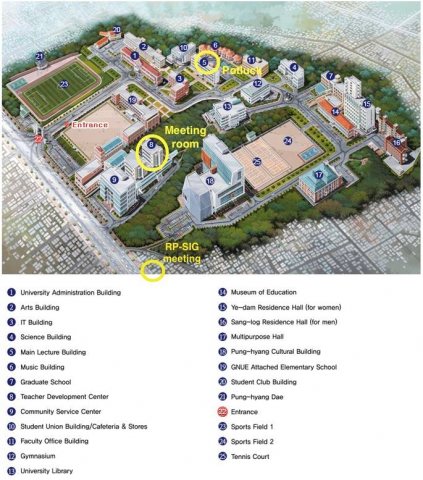
Gwangju-Jeonnam Chapter February Meeting
.
––– Morning Reflective Practice Session –––
No session scheduled for this month.
––– MAIN MEETING SCHEDULE –––
Time: 3rd Saturday, February 16, 2019, 1:45ㅡ5:00 pm
Location: Gwangju National University of Education (GNUE), Teacher Training Center (교사교육센터) 1st Floor; Room 811. Detailed directions HERE.
1:45 pm: Sign-in and Meet-and-Greet (Admission: Free for newcomers. Membership welcomed.)
2:00ㅡ2:50 pm: Presentation 1
ㅡ Reusable Classrooms Resources
ㅡ Jessica Magnusson (Gwangju National University of Education, Gwangju)
2:50ㅡ3:10 pm: Refreshment Break
3:10ㅡ4:00 pm: Presentation 2
ㅡ Creating an Interactive Classroom
ㅡ Hannah Jones (Jeonju-North Jeolla Chapter, KOTESOL)
4:10ㅡ4:45 pm: Swap-Shop Presentations
Share your Teaching Ideas, Classroom Activities, and Teaching Wisdom with the group.
(Everyone is encouraged to share [up to 5-6 min. each]. Short tidbits are welcomed. Handouts also welcomed.)
4:45 - 5:00 pm: Announcements / Drawing for Door Prizes / Closing
Session Summaries
Reusable Classrooms Resources
.
By Jessica Magnusson
Teachers work hard to prepare lessons that are both educational and enjoyable for students. The use of educational materials such as clay, games, and project kits can liven up a classroom. However, purchasing classroom materials can be a financial burden to individual teachers or to schools. Some materials require a huge amount of prep time from teachers. Some materials break down from wear and tear. In addition, some materials are only used once or twice and can clutter up classrooms or storage spaces. Or even worse, sometimes teachers spend hours and hours preparing materials that only end up being used for a few minutes in class.
This presentation looks at different types of resources for a classroom or school that are durable, educational, and can be used over and over again. Some of the resources talked about will be individual whiteboards, building blocks, and glow-in-the-dark writing boards. While many of the reusable resources talked about in this presentation have been used in young learner classrooms, all ages of students (and their teachers) can benefit from reusable resources.
Reusable resources can make the lives of teachers much easier. As teachers are often very busy and have various different classes to teach, resources that require minimal prep time will be discussed. What teaching resources are the easiest to organize, store, and find when it comes time to teach?
Teaching resources, however, are not always physical materials, they can also include files and online resources. Many teachers have the experience of creating a great lesson, only to not be able to find that file in the future. Naming conventions and optimal storage for files will be discussed so that teachers can access their files much more easily.
Participants will also be given an opportunity to discuss their favorite teaching materials in small groups and the reasons why they like these materials.
The Presenter

Jessica Magnusson has taught English conversation, teacher training, and special programs at Gwangju National University of Education (GNUE) since 2011. She also has various types of hagwon and English camp experience. Jessica earned an MA in TESOL from the School for International Training (SIT) in Brattleboro, Vermont. She is interested in teaching vocabulary and reading comprehension to all ages of learners. Email: magnussonjessi@gmail.com
_________________________
Creating an Interactive Classroom
.
By Hannah Jones
There are various methods teachers can use to facilitate stronger interaction in their classrooms. First, we must define what interaction means in a learning context. There are some key aspects of interaction that a teacher should take note of and facilitate during his or her lessons, as well as desired traits that the teacher should attempt to foster within the classroom environment – and, of course, there are many strategies a teacher can use to encourage the development of these traits.
While interacting with students, a teacher should be aware of the various roles they take on when interacting with students, and the types of questions they are asking during knowledge checks. The goal is always to boost student output and ensure comprehension goals are being met; this creates students with strong agency and language identity.
In addition to discussing all the ways the teacher models and provides input and mediation for the students, I will discuss how research shows peer mediation is crucial to second language learning as well. This can be introduced to the classroom using various group and partner activities. Studies show that using these types of activities not only increase comprehension, but also encourages students to produce meaningful output and attempt to negotiate meaning.
The Presenter

Hannah Jones is originally from Baltimore, Maryland (USA). She graduated with a bachelor’s degree in English, with a specialization in professional writing, magna cum laude. She is currently completing a MA in applied linguistics with a specialization in TEFL from the University of Massachusetts, Boston. She has been teaching English for four years at an academy and also works as a content writer and copyeditor for the MCAT test prep website, Gold Standard. She is always striving to become a better teacher, collaborate with other teachers, and keep up-to-date on TEFL and SLA research. Email: Hannah9392@gmail.com
_________________________
Photo: The Gwangju National University of Education (GNUE / 광주교육대학교), Teacher Training Center (교사교육센터), venue for our main meeting ㅡ 1st floor, Room 811.




